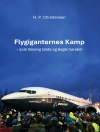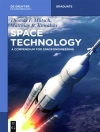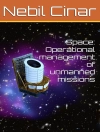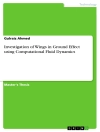In the early 1990s, NASA Goddard Space Flight Center started researching and developing autonomous and autonomic ground and spacecraft control systems for future NASA missions. This research started by experimenting with and developing expert systems to automate ground station software and reduce the number of people needed to control a spacecraft. This was followed by research into agent-based technology to develop autonomous ground c- trol and spacecraft. Research into this area has now evolved into using the concepts of autonomic systems to make future space missions self-managing and giving them a high degree of survivability in the harsh environments in which they operate. This book describes much of the results of this research. In addition, it aimstodiscusstheneededsoftwaretomakefuture NASAspacemissionsmore completelyautonomousandautonomic.Thecoreofthesoftwareforthesenew missions has been written for other applications or is being applied gradually in current missions, or is in current development. It is intended that this book should document how NASA missions are becoming more autonomous and autonomic and should point to the way of making future missions highly – tonomous and autonomic. What is not covered is the supporting hardware of these missions or the intricate software that implements orbit and at- tude determination, on-board resource allocation, or planning and scheduling (though we refer to these technologies and give references for the interested reader).
Tabella dei contenuti
From the contents
Part I Background.- Introduction.- Direction of New Space Missions.- Overview of Flight and Ground Software.- Flight vs. Ground Implementation.- Flight Autonomy Evolution.- Current Levels of Flight Automation/Autonomy.-Ground Autonomy Evolution.- Agent Concept Testbed.- Part II Technology.- Core Technologies for Developing Autonomous and Autonomic Systems.- Reasoning with Partial Information.- Agent-based Spacecraft Autonomy Design Concepts.- Spacecraft Enabling Technologies.- Cooperative Autonomy.- Need for Cooperative Autonomy in Space Missions.- Autonomic Systems.- Overview of Autonomic Systems.- Part III Applications.- Intelligent Agents in Space Constellations.- Swarms in Space Missions.- Swarm Technologies at NASA.- Concluding Remarks.- Future Missions.- Appendix A: Attitude and Orbit Determination and Control.- Appendix B: Operational Scenarios and Agent Interactions.- Acronyms.- Glossary.- References.- Index.












